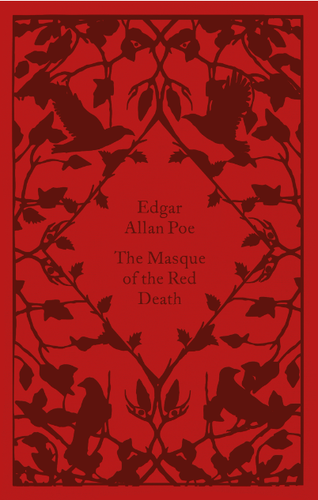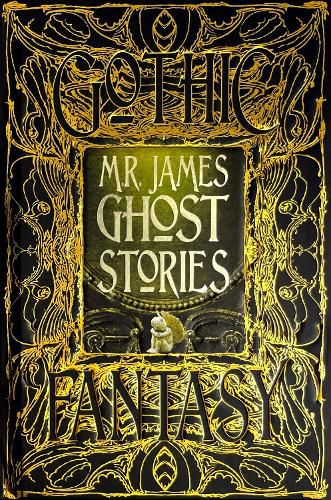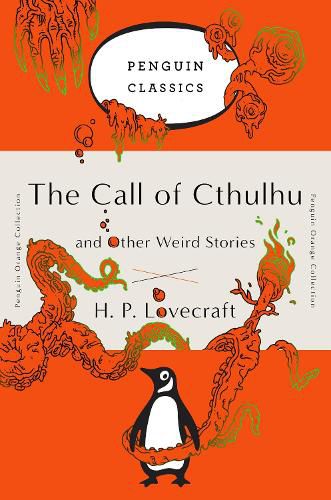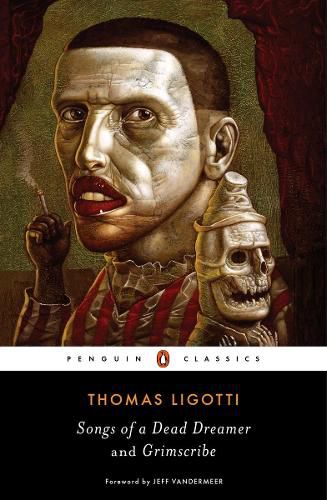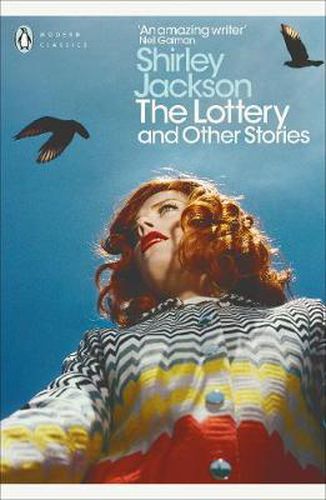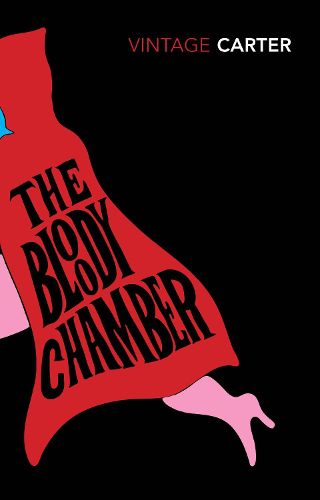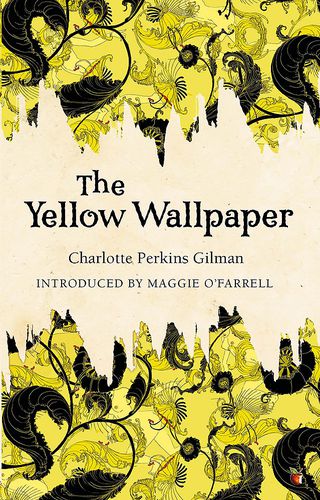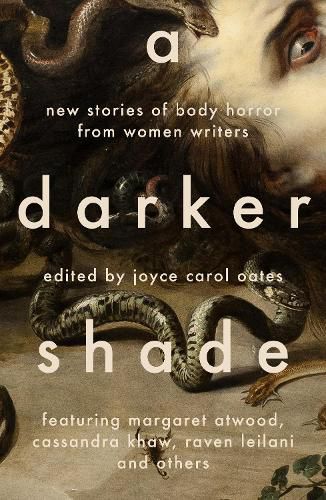During the month of October our Readings bookseller and resident horror fiction aficionado, Joe Murray, is sharing his picks for the very best horror short fiction to get you in the mood for Halloween. You might have seen his recommendations on our socials during the month, but here's part one of his in-depth round up of why you need to read these masterful works of horror.

In these tales, horror comes from the strange, frayed edges of the normal world: it comes from forbidden knowledge, ancient secrets and the madness that lurks in the heart of sanity. Their heroes are often scholars or outsiders, toying with powers that should not be disturbed, and haunted by the darknesses they unleash, which are rarely as simple – or as immaterial – as an ordinary ghost. These horrors date back to the beginning of the genre, but their legacy continues today.
The Masque of the Red Death by Edgar Allan Poe
If any author needs no introduction, it is Edgar Allan Poe, whose contribution to the world of short-form horror is rivalled by few others. So many of his stories have become permanent fixtures of horror iconography that I would likely have an easier time listing those stories that are simply ordinary. Within his collection are tales of pure suspense, such as the immediately gripping ‘Pit and the Pendulum’, shocking portraits of madness like ‘The Tell-Tale Heart’, or luxuriously gothic nightmares such as the underappreciated ‘Ligeia’. However, my favourite pick will always be ‘Masque of the Red Death’, a magnificent vision of hubris and arrogance that is short, sharp and viscerally haunting.
Ghost Stories by M.R. James
Hailed as the master of the English ghost story, M.R. James’ tales deliver an endless succession of unfortunate scholars into the dangerous worlds of the arcane, pagan and occult. From spirits of nature that find form in tangled bedsheets to Biblical demons contained within ancient documents, James’ horrors are always unexpected and unsettlingly alien, confronting his protagonists with things that refuse to fit within their rational world. Indeed, these stories are just as defined by their mysteries as they are by their horrors, luring the reader in with the pleasures of investigation before suddenly twisting into outright terror, sending the intrepid heroes fleeing back to normalcy whilst unable to forget by what they have witnessed. Perhaps this is why I like ‘Casting the Runes’ so much, as it follows a decidedly spectral game of cat and mouse between a disgruntled occultist and the academic who rejected his paper. To survive the threat to his life, James’ hero must uncover his foe’s methods; to defeat him, he must embrace the arcane logic of the supernatural.
The Call of Cthulhu and Other Weird Stories by H. P. Lovecraft
To read Lovecraft is to wrestle with complexity: yes, Lovecraft was a brilliant storyteller and a pioneer in the genres of weird fiction and cosmic horror. Yes, Lovecraft was also a virulent bigot whose art was shaped by his unshakeable xenophobia. Nevertheless, it is difficult to avoid Lovecraft and the mark he has left on the horror genre with his tales of great, unimaginable powers beyond modern reason and human comprehension. Whether in the classic ‘The Call of Cthulhu’ which first introduced the world to the now-famous eldritch God; the slowly creeping dread of ‘The Dunwich Horror;’ or the eerie majesty of the colossal polar city featured in the novella-length ‘At the Mountains of Madness,’ Lovecraft’s worlds are utterly unique products of a troubled mind.
That central conflict between invention and hate lies at the centre of my definitive Lovecraft tale, ‘The Shadow over Innsmouth,’ where Lovecraft confronts his fears of purity and miscegenation through the vessel of the rotten old port of Innsmouth and its dark secrets.
Songs of a Dead Dreamer and Grimscribe by Thomas Ligotti
Amongst this assembly of strange authors with stranger imaginations, Thomas Ligotti stands out for the simple fact that his works emerge multiple decades after his predecessors, with these twin collections emerging in the late 20th century. Nevertheless, Ligotti easily fits in alongside Poe’s gothic nightmares, James’ esoteric mysteries and Lovecraft’s alien madness, offering tales that feel like they have been twisted just one step darker than those predecessors. Each story feels drawn directly from a world of nightmares where puppeteers enact spine-chilling revenge, serial killers frolic through open windows and small towns hide macabre festivals; and when the subject matter itself is surreal Ligotti’s writing only gets stranger and more hypnotic. Whether in the endless dreamscapes and narrative twists of ‘Vastarien’ or the bewildering ‘Notes on the Writing of Horror: A Story’, which begins as an essay on horror writing before quickly and utterly dissolving before the reader’s eyes, Ligotti’s horror revels in the unexpected. However, sometimes simplicity is key, and in the eight pages of ‘The Greater Festival of Masks’ Ligotti invokes ideas of ritual, conformity and monstrosity with a subtle touch reflective of his mastery of the form.

In these tales, horror and gender are rendered inseparable. Whether in the threats of male violence, both literal and symbolic, or the simple suffocations of domesticity, each of these authors approach the realities of being a woman and draw no small degree of horror from them. Alongside this feminist preoccupation runs an undercurrent of subversion and unsettlement, as realms of safety such as the home, or in the striking case of Angela Carter, classic fairy tales, are proven to be just as conducive to horror as the bloodiest dungeons.
The Lottery and Other Stories by Shirley Jackson
Although she is perhaps best known for her gothic novels of haunting and isolation, Shirley Jackson was also a brilliant author of short stories that grounded their horror within the simple terrors of social bonds: communities, families, marriages. In perhaps her most famous story, ‘The Lottery’ those terrors are rendered shockingly explicit as an entire village gather for a grotesque ritual, but I would argue Jackson is just as effective when she revels in subtlety.
‘The Daemon Lover’ is a straightforward story about a woman searching for her disappeared fiancé, full of the stings of betrayal and heartbreak; ‘The Flower Garden’ sees a wholesome, budding friendship slowly rotted away by the quiet violence of casual racism; ‘The Tooth’ mines a surprising amount of surreal horror from the struggles of exhaustion and a toothache; whilst ‘The Witch’ only needs a short train ride to unsettle you. However, ‘The Renegade’ deserves a special mention for its suffocating dread, as a woman is asked to ‘do something’ about her problem dog. Under the gaze of a tight-knit community, her agency is quickly erased and she, and the reader, is left feeling more trapped than if she had been chained up in a basement.
The Bloody Chamber and Other Stories by Angela Carter
Of all the collections featured here, Angela Carter’s rich and decadent reimagining of classic fables feels the most cohesive as a single work of art. Each story has a place within the world of violence and desire that Carter finds hiding just beneath the surface of her time-worn subject matter.
She begins with the novelette-length title story that draws out the latent eroticism and sadomasochism within the tale of Bluebeard and his murdered wives, before delivering a trio of cat stories, two approaching Beauty and the Beast from inventive new angles while the third, ‘Puss In Boots’ delivers a delightfully ribald story of courtship and deception. Three twisted romances follow, each with their own strange lovers: forest men, snow children or vampiric brides, but it is with the collection’s closing wolf stories that Carter truly invites outright horror. As she deconstructs, merges and transforms the figure of the werewolf and the tale of Red Riding Hood, Carter produces a captivating portrait of menace and savagery, reminding us exactly why the wolf looms over so many of our oldest tales.
The Yellow Wallpaper by Charlotte Perkins Gilman
It is exceedingly rare for a short story to be primarily published by itself, but The Yellow Wallpaper has earnt that accolade. It tells the story of a woman forcibly confined to a life of inactivity in a single room, in a misguided attempt to cure her of some unspecified mental affliction. Her mind steadily begins to unravel, and with no other mental stimuli, she obsesses over her room’s yellow wallpaper, searching for patterns within it and placing it at the centre of her delusions.
Gilman traps the reader within this constricted, deranged perspective just as completely as her unnamed narrator is herself trapped, physically and mentally, by men who presume to know what’s best for her. The proverbial camera doesn’t cut away for a second, offering little reprieve from the quiet violence of her medical treatment, reflecting a real history of patriarchal oppression disguised behind the euphemism of a ‘rest cure.’
A Darker Shade edited by Joyce Carol Oates
Across this inventive and diverse anthology’s sixteen stories, feminist body horror acts as a language with which these authors pay homage to the legacies of horror. Aimee Bender and Yumi Dineen Shiroma’s stories each echo and reinvent classic monsters, invoking Frankenstein’s monster in a doll stitched from bodily growths or imagining Dracula as the centrepiece of a toxic sapphic love triangle.
However, what was more striking to me is the way that this anthology proudly bears the influence of the other female authors I’ve mentioned. Stories about theatrical performances of Bluebeard or grotesque lupine transformations reflect Angela Carter’s preoccupations, whilst Megan Abbott’s story of lurking domestic horrors would feel right at home alongside Shirley Jackson’s work. Oates’ story especially offers compelling contrast with The Yellow Wallpaper depicting similar medical horrors but from a position of total clinical detachment. However, this collection also looks forward, presenting distinctly modern horrors: unspoken bigotries, repressed identities and, in Lisa Tuttle’s excellent ‘Concealed Carry,’ a grotesque confluence of reproductive rights and gun control.


